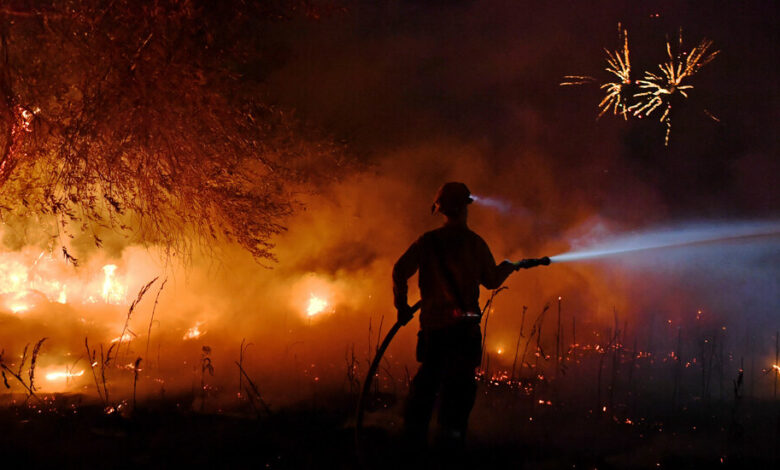Think twice before setting off fireworks on July 4th

For many people, fireworks are the ultimate 4th of July celebration.
Who hasn’t enjoyed a summer evening in a friend’s garden, or in the park, stretched out on a blanket, watching the colorful light shows illuminate the sky?
But this beloved Independence Day tradition can also pose a grave danger in wildfire-ravaged California, especially when the weather is as hot and dry as it has been this week. Two forest fires Authorities say there have been incidents in the East Bay in recent days that may have been caused by illegal fireworks.
Fireworks sparked 916 wildfires in the state in 2021, the most recent year for which complete data is available, and those fires caused more than $3.2 million in property damage, according to CalFire. The year before, in the state’s worst fire season everfireworks caused more than 2,000 fires and $8 million in property damage, injuring 11 people and killing one.
It’s not just a California phenomenon. study A report published last year in the journal PLoS One found that fireworks sparked more than 11,000 wildfires nationwide between 1980 and 2016, with two-thirds of those fires occurring in the two-week period surrounding the Fourth of July.
In fact, more fires started on July 4 than any other day of the year.
That’s largely due to fireworks, but not the large professional fireworks displays that are held legally across the country, said Daniel Swain, a climate scientist at UCLA, in a online briefing Monday. The fireworks that cause fires are mostly set off by people using fireworks, often in places where it is illegal to possess or use fireworks, he said.
In California, fireworks are banned in several major cities, including Los Angeles, San Francisco, San Diego, and San Jose. This means that you are not allowed to purchase or set off fireworks for yourself anywhere, at any time of the year.
About 300 communities However, the state does allow certain types of fireworks. If your community is on that list, fireworks that explode, fly into the air, or move uncontrollably are still allowed forbidden area. Only a few types of fireworks are legal in those areas — mostly fountains, sparklers and pinwheels — and only if they have a “safe and sound” seal of approval from the California State Fire Marshal, confirming they have been tested by the state.
According to Swain, the July 4 fires in California caused by fireworks are not particularly destructive because the windy, dry conditions that cause the worst fires usually don’t occur until later in the summer or early fall.
But this year, Independence Day coincides with a prolonged heat wave, and the National Weather Service is warning dangerous fire conditions in areas across the state, including the Bay Area mountain ranges and the Sacramento Valley. Fires sparked by fireworks may not be as easy to contain this year, Swain said.
“Fasten your seatbelts,” he said. “I think the fire season in California is going to ramp up significantly over the next five to seven days.”
And before you go, some good news
Food Share, a nonprofit organization, fed more than 260,000 people in Ventura County last year, ABC 7 Los Angeles reports.
It began distributing food during the pandemic shutdowns, when many in the region needed support. Even after those shutdowns are over, the cost of living in California will remain high and nutritious food will remain expensive.
Food Share and its 3,800 volunteers continue their efforts to distribute bags of food to anyone in need: About 1,000 cars line up at an Oxnard food bank each week for the healthy produce and groceries Food Share provides, rain or shine.
Thanks for reading. We’re off for the rest of the week and will send you another message in your inbox on Monday. Happy Independence Day! — Soumya
PS Here is Today’s Mini Crossword.
Halina BennetLuke Caramanico and Mathew Brownstein contributed to California Today. You can reach the team at CAtoday@nytimes.com.
Sign up here to receive this newsletter in your inbox.




